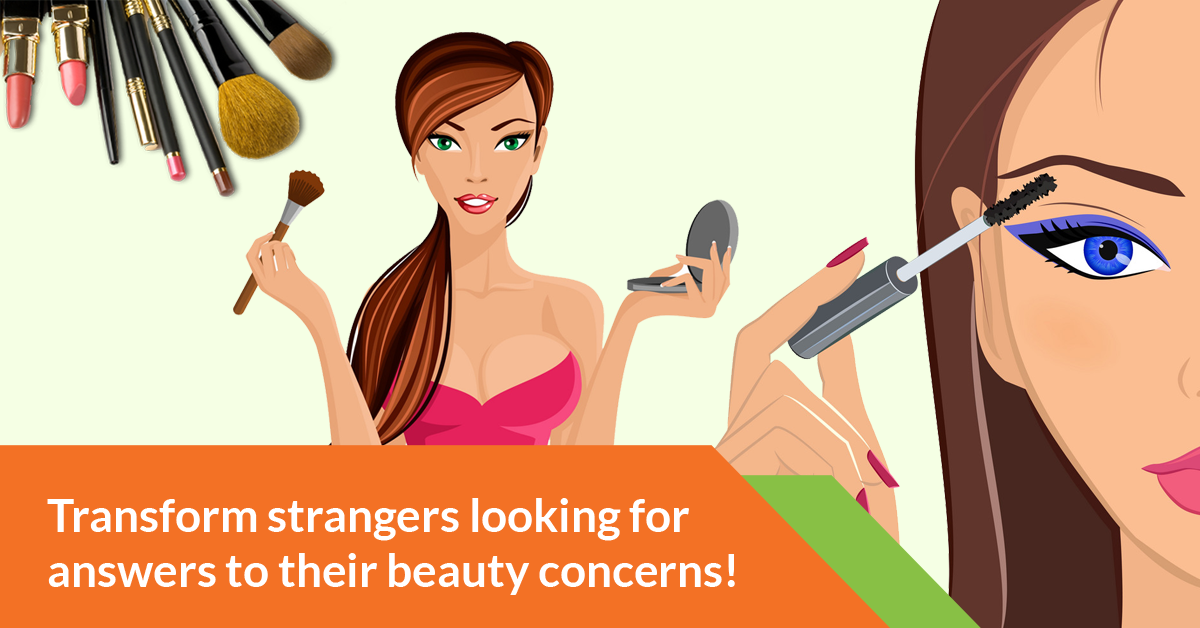
Sephora. Clinique. Maybelline. These brands have made their mark on customers looking for the perfect way to express themselves through just the right beauty products to make them shine.
But small beauty businesses that produce makeup & provide salon services don’t yet have the name recognition that comes with these brand sensations.
More critically, they often don’t have the financial resources to get started with building marketing strategies for beauty products.
And that’s where the Customer Value Journey comes in.
By taking customers on a journey that builds a relationship with your products, you can easily transform them from strangers looking for answers to their beauty concerns to evangelists for your solutions.
Small businesses are using the Customer Value Journey’s marketing strategies for beauty products. And it’s paying off.
But first…it all starts with a great website.
The Website Is The Thing
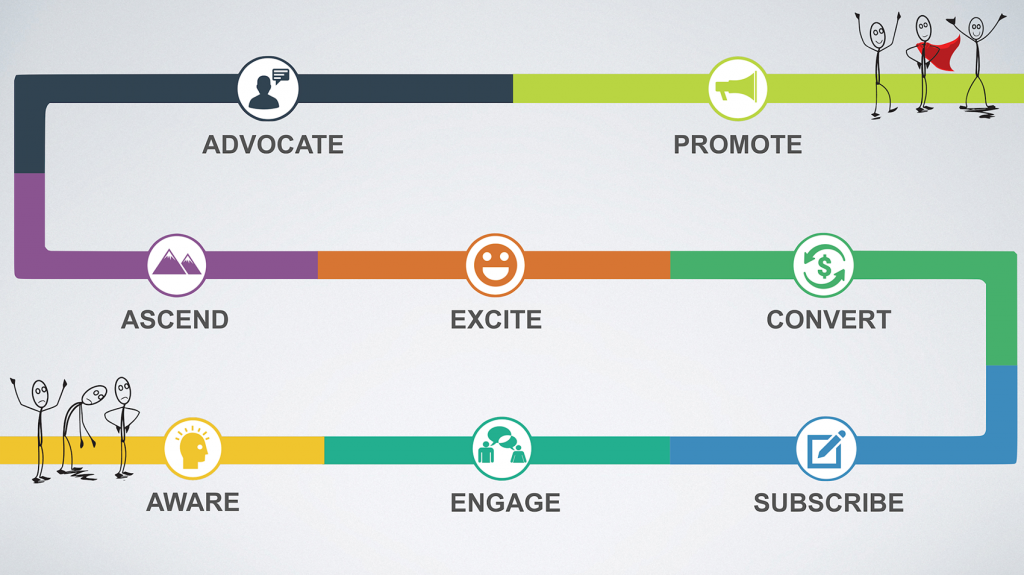
Anyone on a journey needs a vehicle to travel in, & for these beauty enthusiasts, their vehicle is the website.
It’s not only where you engage new visitors & showcase what you’re about, but it’s where you build authority with content that establishes you as a trustworthy source with lots to offer.
And once that happens, your website sets the stage for them to subscribe, make a purchase & start experiencing the excitement of joining your brand’s family.
The key is to create a website that strategically gives visitors everything they need to evaluate your brand & see it as something worth digging into. It’s why Cirius Marketing has a patented formula to create websites that make money.
So how do you put it all together? These three small businesses have proven themselves to be masters of the art of using their websites & marketing strategies for beauty products that build customer relationships while driving sales.
3 Businesses That Nailed It & Their Secrets To Success
Kill It With Content Like Amalie Beauty
Amalie Beauty founder Megan Cox woke up in her college dorm at MIT to the news that the eyelash restoring product she was selling online had made $10,000 overnight.
She created the product, Wink, so that people who had destroyed their natural lashes could have an organic solution without harsh chemicals or after effects.
Wink is an oil that works on lashes and brows to stimulate hair follicle growth in the eyelashes, making it a perfect fit for the rapidly growing organic beauty & health care industry.
What obviously accounts for Wink’s success is that it solves a particular problem the customer has. Cox took note of the absence of an organic solution & her online store was born.
But Cox has also established herself as an authority in the brow & eyelash space with content that clearly portrays how her product takes customers from a less-ideal Before State to their ideal After State.
Her secret to marketing strategies for beauty products? Reviewing other beauty products on her blog.
Not only is she able to build connections with customers by providing tutorials, tips & beauty advice to her audience, but she also borrows authority & recognition from big brands.
As a result, she’s gotten more organic traffic, sales & overall awareness of Wink.
On top of that, she repurposes her blog content as Instagram posts with attractive, eye-catching photos with poignant, timely messages & beauty tips.
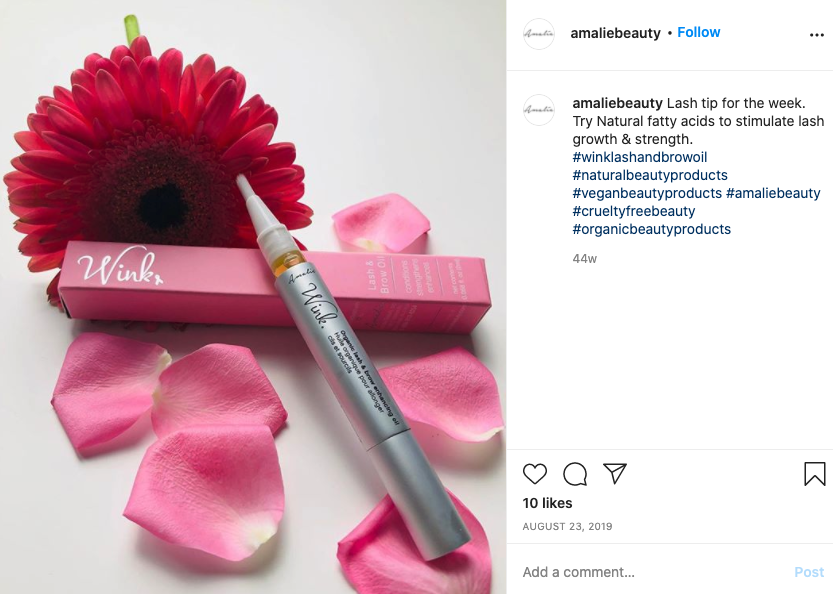
Create Efficiency Like Tula
Skincare company Tula didn’t get off to a great start with selling products online. Their original ecommerce store struggled with loading speed, performance & handling large amounts of traffic.
As a result, the company suffered from a loss of sales & thus an inability to fully communicate their message of all-natural skin care with probiotics.
The transformation happened when they switched ecommerce platforms to Shopify, which allowed them to create a more streamlined, efficient checkout experience that led to a 161% increase in site sessions & total transactions by 407%.
This allowed Tula to also experiment with new & exciting offers through their site. In particular, they launched a Try Before You Buy program that allows customers to pay for only shipping & be charged the full amount if they choose to keep the product after 30 days.
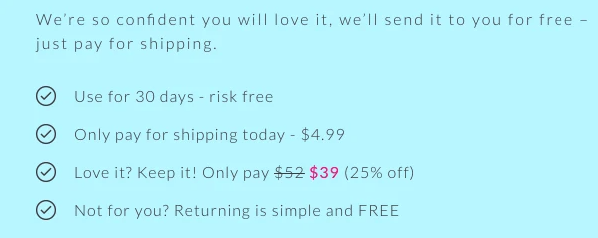
Bottom line: make sure your website is responsive. You should of course make sure it responds smoothly to customer interactions, but think outside the box about how you can help your customers experience the most efficient purchase for their personal needs.
Create Exclusivity Like Sabbatical Beauty
Adeline Koh is a former professor who launched her Korean skin care company while on sabbatical. Frustrated by the lack of workable natural products, she began experimenting with creating her own beauty products out of natural ingredients.
This led to her creation of a formula that rapidly improved the skin condition of not just Koh, but friends who begged her to make her creations for them.
After the company was featured in Slate, Sabbatical Beauty gained an international following.
Today, what started as a personal experiment has turned into an $800K business that has allowed Koh to quit teaching.
One of the most successful elements of Sabbatical’s website is The Backstage Pass, a members-only program that gives customers free “mystery samples,” early access to new products & access to exclusive sales & events for $25 a month.
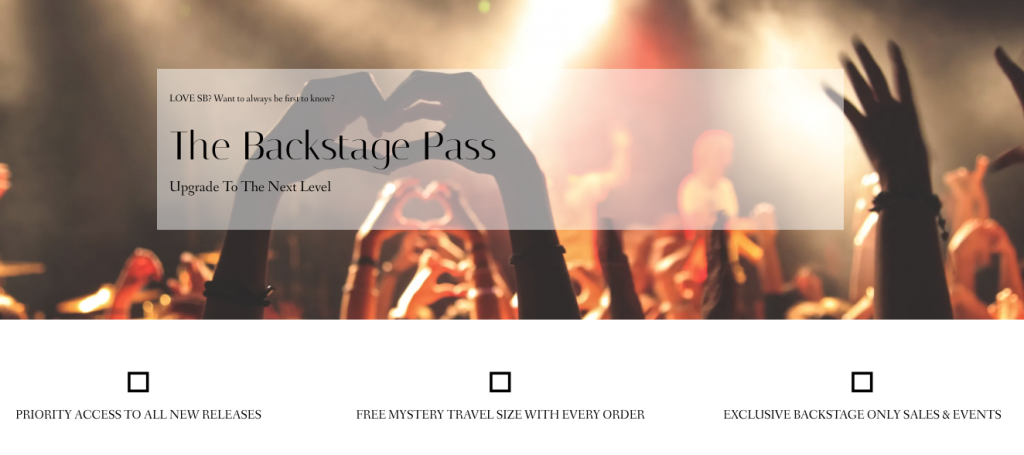
Sabbatical shows how the best websites serve as a vehicle for every stage of The Customer Value Journey.
It doesn’t just generate leads & sell things—it helps ascend customers to the level of repeat buyers by rewarding them & placing them in an exclusive group with bonuses that are just for them.
Selling your core product on your website is good…but it isn’t the end game. Remember: the goal is to create new customers whose lifetime value will grow when they keep coming back to buy more.
How Do I Make It Happen?
Clearly, all 3 of these businesses learned the importance of a website that is responsive, engaging & easy to use.
So now that you’ve got an idea of how these beauty companies’ websites helped them generate more leads & profits, you’ve probably got some ideas about how you could do the same things with your own website.
Whether you own a beauty business or not, all 3 of these techniques can work for you, & the fact that these small businesses used them to grow shows that it’s possible for you as well.
So how do you get started? We have a patented formula for creating websites that work….& you can access it for free by downloading the One Size Fits All Website Template.
Not only does it unlock the formula…it also tells you exactly how many pages your website needs & exactly what goes on them.
It’s the perfect way to start making your website work so you can experience successes like these businesses.
